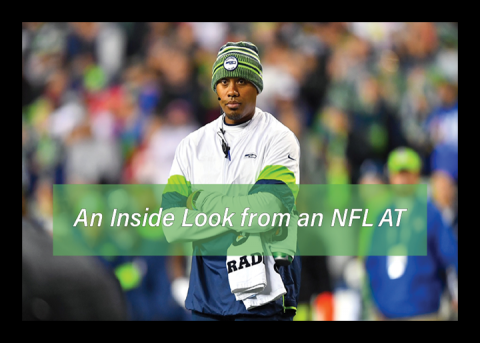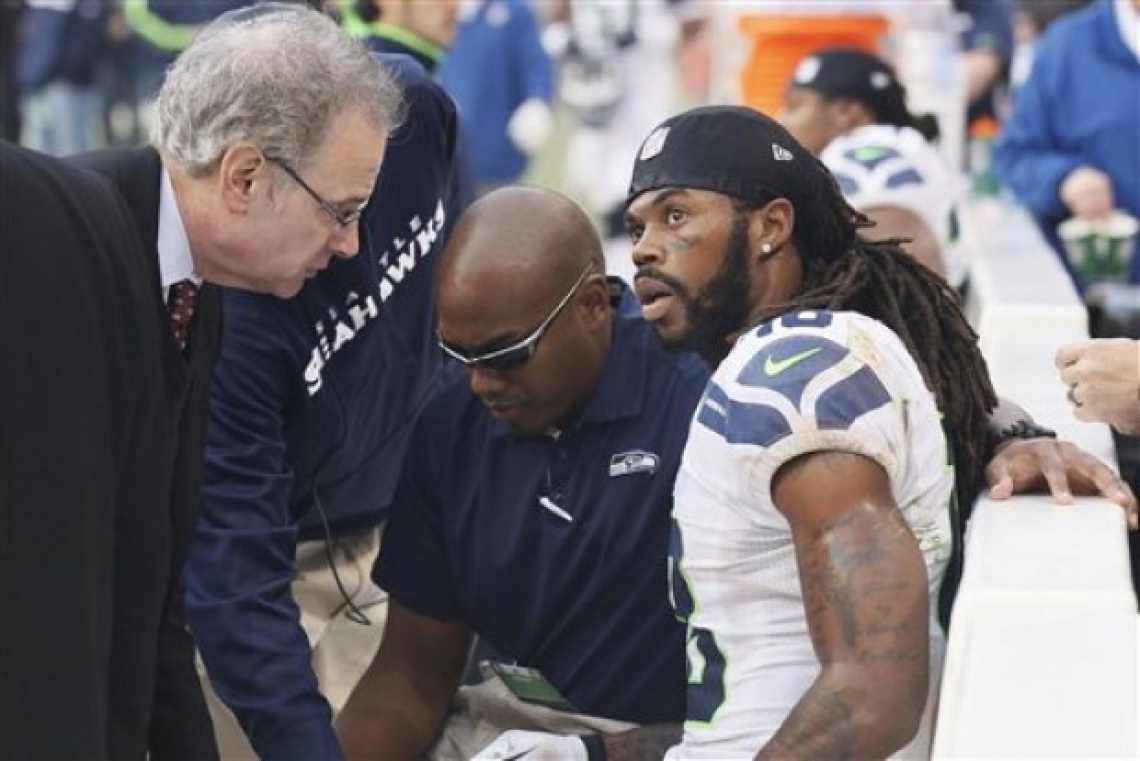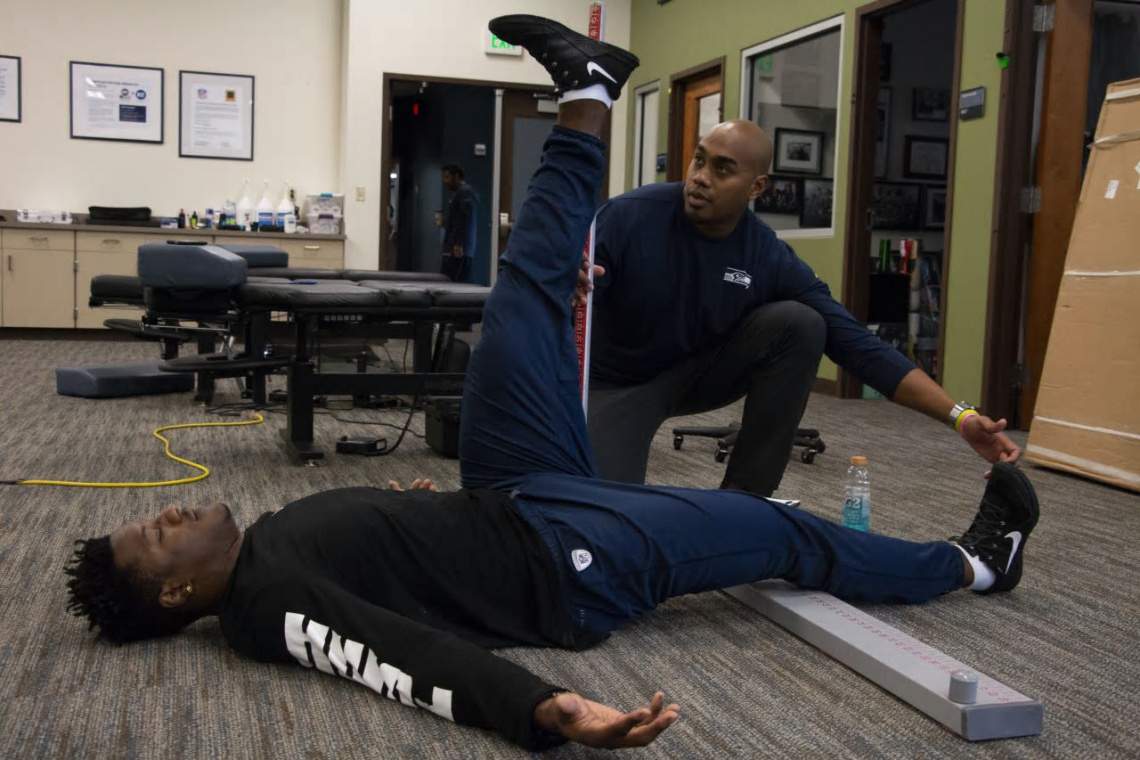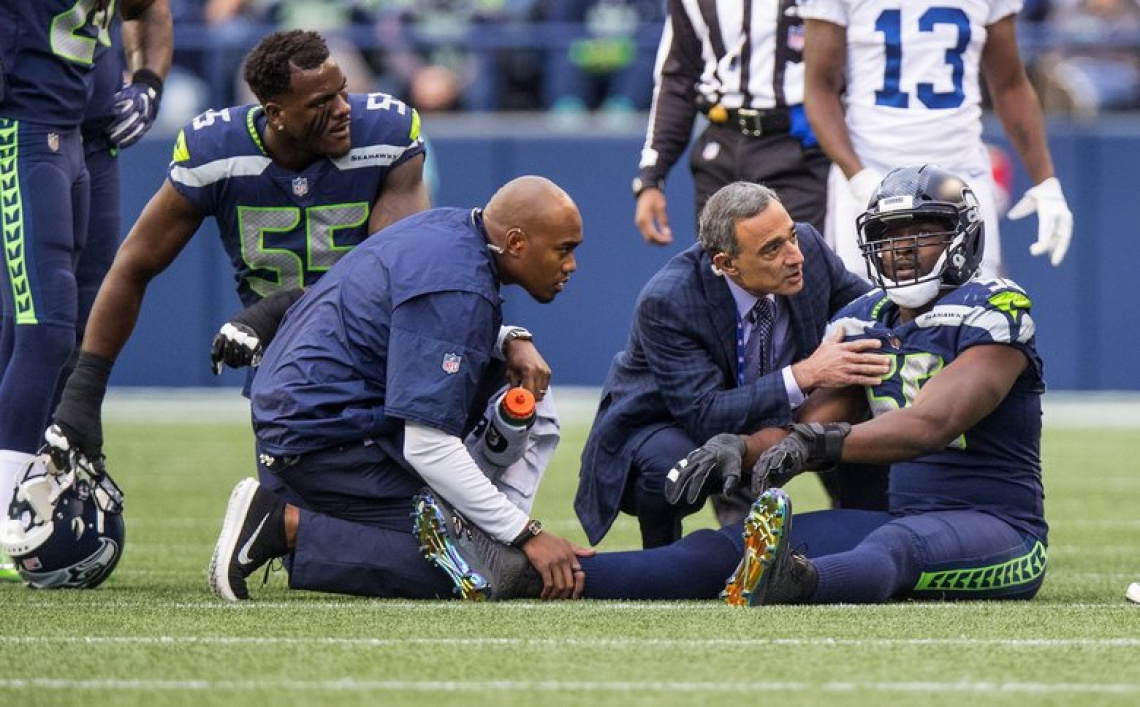
In honor of Black History Month, NATA is conducting a weekly blog series throughout February that showcases Black athletic trainers who work with elite patient populations. This blog highlights David Stricklin, MS, LAT, ATC, head athletic trainer with the Seattle Seahawks.
During the summer of 2002, David Stricklin, MS, LAT, ATC, started his first internship with the National Football League, working for the San Francisco 49ers. It wasn’t long after– three years to be exact – that he started his yearlong position as season-long athletic training intern for the Seattle Seahawks’ 2005 season.
In 2010, Stricklin received an offer to return to the Seattle Seahawks. After nine years with the Seahawks, Stricklin was promoted to head athletic trainer, a position he still holds.

“Specifically to [the NFL] environment, there are different nuances,” Stricklin said. “The health care aspect is really neat. You’re dealing with high-end football players, and we have a lot of resources here due to that. We have a staff of five just on the full-time medical staff– and that’s just athletic trainers, two of whom are dual credentialed as physical therapists.”
Also during the season, the medical staff has two season-long athletic training interns. Stricklin said the team also has orthopedic surgeons, physiatrists, general medical physicians, chiropractors and an acupuncturist.
Continuous Management
Although game days are on Sunday, Stricklin said their management of game days start on Monday.
“[Game day management] is figuring out who is available that week for practice, the game and everything in between,” Stricklin said. “How bad is the injury? What’s the prognosis? Can the player practice on Wednesday or Thursday or not at all? Navigating those waters is one of the most difficult parts. By Friday, we shake it out and know who is playing, if they will have a rep count, etc. Sunday, really for us, is the easiest part of the week – besides the 60 minutes we play football before it restarts the cycle.”
Right before Sunday games, the emergency staff, which includes the visiting team’s medical liaison, airway management, EMTs, paramedics and neuroconsultants, among others, have a meeting called the 60-minute huddle, since the meeting is 60 minutes prior to kickoff, to go over emergency action plans. As soon as kickoff begins, Stricklin said he and the rest of the medical staff stay vigilant looking for orthopedic injuries, concussions and other medical issues. Player safety is their top concern.
As the last whistle blows, Stricklin and staff look over the players for post-game injuries and, if the game is early enough, they are able to send the players for imaging that night.

One unique thing about working with the Seahawks is that he gets to do diagnostic imaging, Stricklin said. With this type of imaging, medical professionals are able to evaluate further, and it takes the guessing out of diagnosing. Stricklin gave the example of a player having a tight hamstring. With diagnostic imaging, he can cite the tight hamstring as a grade-one hamstring pull.
“We might over image, but we do it with an attempt to know, and let the player know, as much as possible with the resources we have,” Stricklin said. “Our knowledge of what we are dealing with, how long it will take, imaging, platelet-rich plasma, stem cells, joint lubricant injections, we have that all at our fingertips. We are a movement-based athletic training facility. We can get whatever we want, but a lot of what we do is rehabilitation.”
Stricklin then communicates with management late into the evening, sharing what the medical team saw, injury prognosis and know where the players are at – physicality wise – on Monday, he said.
After 16 years as an AT, there is one thing – the same thing – that keeps Stricklin coming back to the professional football setting year after year.
“When working with a player – we are there from day one when they are hurt,” he said. “For a lot of players, this is their identity. They’ve been playing this game since they were 10. When a player gets hurt and they can’t do what they’ve been doing for 20 years, it’s a blow to their personality and psyche. Going on the journey with the player to get back on the field and learn their goals is a huge high for me. I love playing a part, a small role, in motivating and erecting the symphony to get them where they want to go.”
Stricklin also said he likes being the calm in the storm for players and that players can lean on the medical staff. If the players are really in trouble with a life-threatening injury, the medical staff can be there for them, and the players know they are in good hands, he said.
Knowing Your Patient
When working with any patient, Stricklin said it’s important to know them individually and have cultural competency front of mind.
“It’s important, as ATs and medical professionals, to speak different languages and tailor our actions, messages and interacting with players as individuals,” he said. “[Don’t] treat all players the same. They aren’t the same. Polynesian people from traditional backgrounds are family oriented, so if you need to reach them and they have something going on with family, that will trump everything. Not knowing that about the player you’re working with will affect [the level of health care you can provide]. … Understanding the unique individual is paramount to get the message across and let them know what’s going on with their body.”

Another factor Stricklin learned while working with this patient population is how to work with different personalities and know each player’s personality.
“Sometimes working with a player’s personality can be more important than working with the injury,” he said. “Personalities can change how you address the most basic of things. Managing the personalities and just sifting through that on a weekly basis is exhausting, but it’s also very rewarding. … Once you reach the player’s ‘end’ of an injury cycle, when they return to play, and you’ve navigated those personalities, it’s very rewarding.”
Stricklin gave the example of two players, both with grade-one hamstring injuries. One player may think it’s the end of their career because they aren’t high on the roster. The other player is top of the roster and isn’t worried about the injury. The top-roster player will do what needs to be done to get it treated and continue playing. Navigating through each player’s reaction, personality and thought process is all part of treating a patient.
Two-Part Advice
Stricklin has two-fold advice for ATs interested in the professional football setting: one part practical, one part philosophical.
“Put yourself in positions to succeed,” he said. “Any summer interns who have been through [the Seahawks program] have heard me say this: Only control the things you can control, such as effort, attitude, getting yourself in positions to succeed, extra time or hours or additional internships, or learning things and expanding your network. Although it may not lead to the NFL, you put yourself in a position that when opportunity knocks, you’re ready.
“Secondly, make sure you know your why. If you do get everything you want and find your dream, realize it’s going to be really difficult. You will have really good and really bad days. If you don’t have something to anchor to, a guiding light in your journey, you’ll get lost. If you don’t identify why you’re doing this, it will be a difficult journey and turn into a nightmare.”
For more information on professional sports, visit the NATA professional sports webpage.
For more information about cultural competency, visit the NATA cultural competence webpage. There you can find resources such as working with patients of different religions, race and ethnicities, sexualities, abilities and more.





